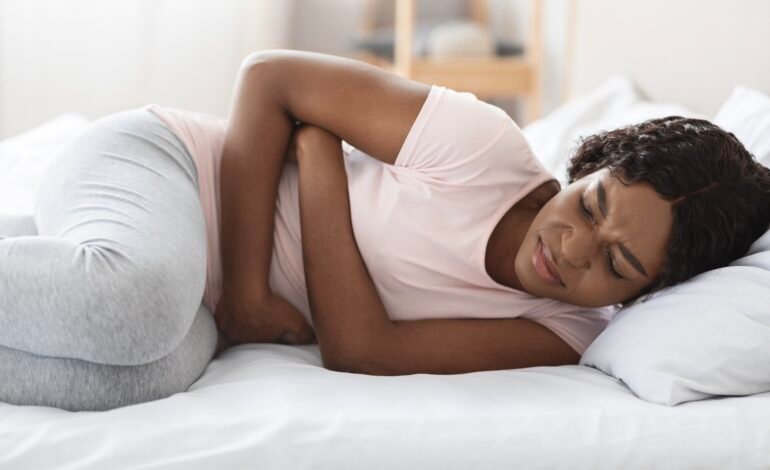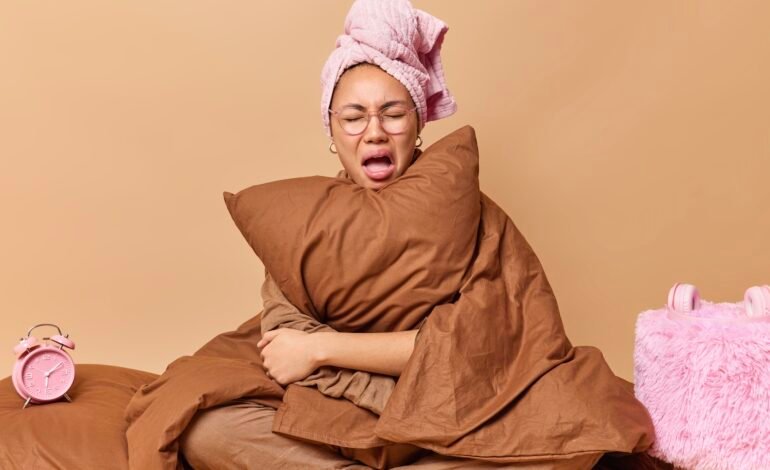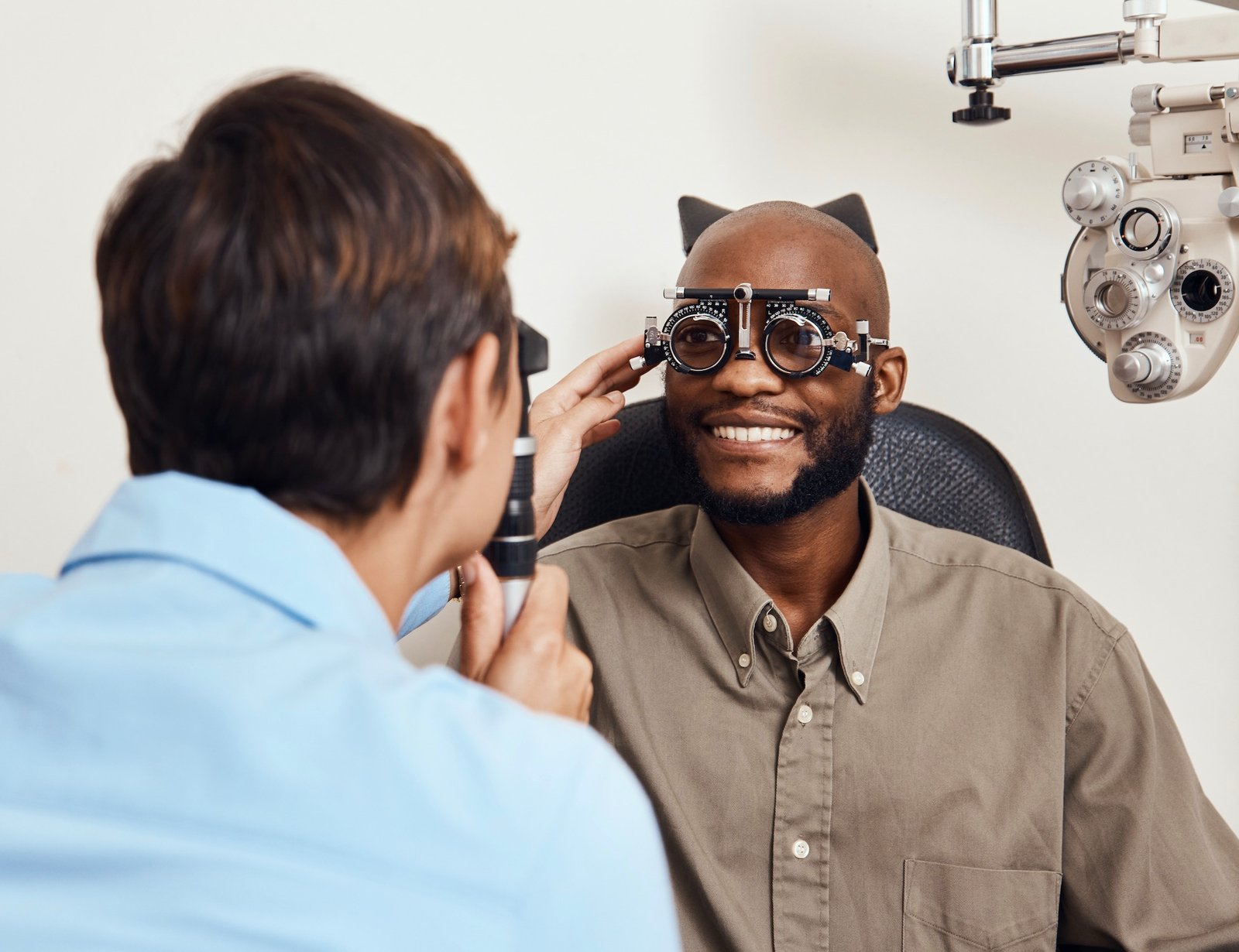Period Pains but No Period – 7 Causes

Period Pains but No Period – 7 Causes
It’s not uncommon to feel unsettled when your body doesn’t seem to follow its usual patterns. If you’ve ever thought, “My period is 4 days late but I have cramps,” or wondered, “Could I be pregnant if I have period pains but no period?” you’re not alone. Many women experience cramping but no period, whether it’s 2 days late or even 8 days late with no sign of bleeding. It’s also possible to feel like your period is starting—complete with all the usual discomforts—only to find there’s no blood at all.
You might also notice other symptoms that add to the confusion, like cramps with no period, especially if you’re certain you’re not pregnant, or maybe you’re experiencing white discharge along with the cramps. You might even be thinking, “Why do I have cramps on my left side but no period?” or feeling as if you’re on your period, despite no bleeding.
In this article, we’ll explore seven main causes that could explain these symptoms:
- Ovulation Pain
- Pregnancy
- Endometriosis
- Pelvic Inflammatory Disease (PID)
- Stress and Lifestyle Factors
- Cysts and Fibroids
- Irritable Bowel Syndrome (IBS)
Understanding these causes can help you make sense of what’s happening with your body and guide you toward the right steps for relief or treatment.
7 Reasons for Period Pains but No Period
Below we discuss the 7 main known reasons for having period pains, but no period (or tangible signs thereof):
1. Ovulation Pain
One of the most common causes of period-like cramps without bleeding is ovulation. This pain, known as mittelschmerz, occurs when the ovary releases an egg, typically around the middle of your cycle. The pain can be on one side of the lower abdomen and may vary from mild to severe. Ovulation pain is generally harmless, but if it’s persistent or very painful, it might be worth discussing with your healthcare provider.

What to do:
- Track your cycle: Use an app or a calendar to note the exact days you experience this pain. If it consistently occurs mid-cycle, it’s likely ovulation pain.
- Over-the-counter pain relief: Take ibuprofen or another nonsteroidal anti-inflammatory drug (NSAID) to manage the discomfort during this time.
- Consult your doctor: If the pain is severe or lasts longer than a day, schedule a visit to rule out other potential causes, such as ovarian cysts.
2. Pregnancy
Cramps without a period can sometimes be an early sign of pregnancy. Implantation, when the fertilised egg attaches to the uterine lining, can cause mild cramping. This typically happens about 6-12 days after conception. If you suspect pregnancy, taking a pregnancy test can help confirm whether this is the cause.

What to do:
- Take a pregnancy test: Purchase a reliable home pregnancy test and use it according to the instructions. The best time to test is a few days after your missed period.
- Monitor symptoms: Keep track of any additional symptoms like nausea, breast tenderness, or fatigue. These can further indicate pregnancy.
- Consult a healthcare provider: If the test is positive, or if you continue to experience cramping without a period, make an appointment with your doctor to confirm the pregnancy and ensure everything is progressing normally.
3. Endometriosis
Another possible cause is endometriosis, a condition where tissue similar to the lining of the uterus grows outside of it. This can lead to severe pain that feels similar to period cramps. If your cramps are persistent and severe, it’s essential to see a doctor, as endometriosis can have a significant impact on your health and fertility.

What to do:
- Document your pain: Keep a detailed pain diary, noting the intensity, location, and duration of your cramps. This information is crucial when discussing symptoms with your doctor.
- Seek a specialist: If endometriosis is suspected, ask your general practitioner for a referral to a gynaecologist who specialises in this condition.
- Explore treatment options: Discuss potential treatments, such as hormonal therapies or surgery, to manage pain and other symptoms effectively.
4. Pelvic Inflammatory Disease (PID)
Pelvic Inflammatory Disease (PID) is an infection of the female reproductive organs and can cause pain similar to menstrual cramps. PID can be caused by sexually transmitted infections (STIs) and can lead to serious complications if untreated. If you suspect you might have PID, it’s crucial to seek medical advice and get tested. Learn more about PID to understand the symptoms and treatments.

What to do:
- Get tested for STIs: Schedule an appointment with your doctor to test for sexually transmitted infections, as these are common causes of PID.
- Start antibiotics immediately: If diagnosed with PID, follow your doctor’s prescription precisely. Complete the entire course of antibiotics, even if symptoms improve.
- Inform your partner: Since PID is often caused by STIs, it’s important that your sexual partner(s) also get tested and treated to prevent re-infection and further complications.
5. Stress and Lifestyle Factors
Sometimes, stress or significant changes in lifestyle can lead to cramps without a period. Stress can affect your hormonal balance, leading to skipped or delayed periods, yet you might still experience the associated cramps. Making time for stress-relief activities like exercise, meditation, or even talking to a therapist can help alleviate these symptoms.
What to do:
- Identify stress triggers: Reflect on recent changes or stressors in your life. Consider using a journal to track how these might be affecting your menstrual cycle.
- Implement stress-reduction techniques: Engage in daily stress-relief practices such as deep breathing exercises, yoga, or a short walk in nature.
- Consider professional support: If stress is overwhelming or persistent, seek support from a therapist who can help you develop coping strategies and address underlying issues.
6. Cysts and Fibroids
Ovarian cysts or uterine fibroids can also cause period-like cramps. These growths are usually benign but can cause discomfort, bloating, and pain. It’s important to get a proper diagnosis if you suspect this is the cause of your pain. Understanding Ovarian Cysts and What You Should Know About Uterine Fibroids can provide more detailed information.
What to do:
- Schedule an ultrasound: If you suspect ovarian cysts or fibroids, ask your doctor for a pelvic ultrasound to diagnose these conditions accurately.
- Monitor symptoms: Keep track of your symptoms, including pain intensity, bloating, and any changes in urination or bowel habits. This will help your doctor determine the best course of action.
- Discuss treatment options: Depending on the size and location of the cysts or fibroids, treatment might range from watchful waiting to medication or surgery. Discuss these options thoroughly with your healthcare provider.
7. Irritable Bowel Syndrome (IBS)
Irritable Bowel Syndrome (IBS) can sometimes cause cramping that feels similar to menstrual pain, especially if it coincides with bloating and digestive issues. IBS is a chronic condition that affects the large intestine, and managing it often involves dietary changes and stress management.
What to do:
- Adjust your diet: Begin by eliminating common IBS triggers such as dairy, gluten, and high-FODMAP foods. Keep a food diary to identify which foods exacerbate your symptoms.
- Increase fibre intake gradually: Incorporate more fibre into your diet, but do so slowly to avoid worsening symptoms. Consider soluble fibres like oats, which are gentler on the digestive system.
- Consult a gastroenterologist: If dietary changes aren’t sufficient, see a gastroenterologist who can provide more tailored advice and discuss other treatment options, such as medications or stress management techniques.
What You Can Do
If you’re experiencing period pains but no period, it’s important to listen to your body and consider any other symptoms. Keeping track of your cycle, stress levels, and any other changes can help identify patterns.
If the pain persists or is severe, consult a healthcare professional. They may suggest a pelvic exam, ultrasound, or other diagnostic tests to determine the cause. Early intervention can make a significant difference, especially in conditions like endometriosis or PID.
When to See a Doctor
You should seek medical advice if you:
- Experience severe or persistent pain.
- Have other symptoms like unusual discharge, fever, or irregular bleeding.
- Suspect you could be pregnant.
- Have a history of conditions like endometriosis, fibroids, or cysts.
Understanding the root cause of your cramps can provide relief and peace of mind. While some causes are relatively harmless, others require prompt medical attention to prevent complications.
By staying informed and proactive, you can better manage your health and well-being.
FAQs
My period is 4 days late but I have cramps. What could be the cause?
Your period being 4 days late with cramps could mean it’s just delayed or you might be pregnant! When your period is late, but you’re feeling those familiar cramps, it’s often because your body is gearing up for menstruation. However, it’s also possible that these cramps are early signs of pregnancy. Implantation cramps, which occur when a fertilised egg attaches to the uterus, can feel just like period cramps.
What to do: First, breathe! Then, grab a reliable home pregnancy test and give it a go. If it’s negative and Aunt Flo still hasn’t shown up after a week, it’s time to chat with your healthcare provider. They can help rule out other causes like stress or hormonal imbalances—yep, stress really can mess with your cycle!
Period pains but no period—could I be pregnant?
Yes, period pains without the actual period could mean you’re pregnant. Cramps without bleeding often signal that your body might be preparing for pregnancy. These could be implantation cramps, where the fertilised egg burrows into the uterine lining. Alternatively, your period might just be late and on its way.
What to do: If the idea of being pregnant makes you nervous (or excited!), head to the pharmacy for a home pregnancy test. Remember, it’s best to take it first thing in the morning when your hormone levels are highest. If the test is a no-go and the cramps persist without any sign of your period, it might be time for a little heart-to-heart with your doctor.
Cramping but no period (2 days late). Should I worry?
No need to worry just yet—cramping with a 2-day late period can still be normal. It could simply be your period getting ready to start, but there’s also the possibility of early pregnancy if you’ve had unprotected sex. Hormonal shifts can sometimes cause a slight delay, making you feel crampy without the actual bleeding.
What to do: Give it a few more days and see if your period arrives. If you’re still crampy and nothing’s happening downstairs, consider taking a home pregnancy test. If the cramps are intense or the test is negative and you’re still concerned, reaching out to your healthcare provider is a smart move.
8 days late, no period but cramps—what’s going on?
An 8-day late period with cramps could be a sign of pregnancy or a delayed period. By this point, it’s understandable if you’re getting a bit anxious! Pregnancy is a strong possibility, especially if you’ve been sexually active. However, stress or other lifestyle factors could also be delaying your period.
What to do: If you haven’t already, it’s definitely time for a home pregnancy test. If it’s negative and still no period after a few more days, schedule an appointment with your doctor. They can help figure out what’s going on and give you peace of mind.
I feel like I have my period but no blood. What’s happening?
Feeling like your period is here but no blood could be due to hormonal changes or early pregnancy. Sometimes your body might mimic the symptoms of an impending period without actually starting. This can happen due to hormonal fluctuations or even the early stages of pregnancy.
What to do: First, relax—you’re not alone! Many women experience this sensation. If you think you might be pregnant, take a home pregnancy test. If not, give your body a few more days to catch up. Still feeling off? A visit to your doctor can help sort things out and ensure everything is on track.
Cramps but no period—I’m not pregnant. Why?
If you’re not pregnant but still cramping, it could be stress, hormonal imbalance, or another condition. Stress, PCOS, and endometriosis are common reasons for cramping without menstruation. Your body might be reacting to external factors, causing cramps even without your period arriving.
What to do: Start by managing your stress levels. Incorporate relaxing activities like yoga or meditation into your routine. If your period still doesn’t show up, or the cramps get worse, make an appointment with your doctor to rule out other conditions. Knowledge is power!
Why do I have cramps on my left side but no period?
Cramps on your left side with no period could be ovulation pain or a cyst. Ovulation pain, or mittelschmerz, often occurs on one side, depending on which ovary is releasing an egg. It could also indicate a cyst, which can cause discomfort and sometimes pain (as explained in this article).
What to do: Take note of your symptoms. If the pain is sharp but short-lived and occurs mid-cycle, it’s probably ovulation. However, if the pain persists or becomes severe, especially with fever or vomiting, get in touch with your doctor. They can check for cysts or other issues.
Cramps, no period, and white discharge—should I be concerned?
Cramps with white discharge but no period can indicate early pregnancy or an infection. Pregnancy often causes an increase in cervical mucus, leading to white discharge. However, a yeast infection or other vaginal infection could also cause these symptoms.
What to do: Monitor the discharge. If it’s thick, clumpy, or accompanied by itching, see your doctor for an evaluation and possible treatment. If you suspect pregnancy, take a home pregnancy test. If neither applies, and your period doesn’t arrive, a doctor’s visit will help clarify what’s going on.
Missed period, cramping in lower abdomen, and white discharge—what now?
A missed period with lower abdominal cramps and white discharge could signal pregnancy or a delayed period. Increased progesterone levels during early pregnancy often cause these symptoms. Alternatively, your body might just be taking its time before your period starts.
What to do: Step one—take a home pregnancy test if you suspect you might be pregnant. Step two—keep an eye on the discharge and cramping. If the discharge changes colour or smell, or the cramps become severe, contact your doctor to check for infections or other concerns.
Period 2 days late with white discharge—should I worry?
Being 2 days late with white discharge isn’t usually a cause for concern. This often happens when your body is preparing for a period or early pregnancy. Cervical mucus production increases before both events, so it’s not unusual to notice a change.
What to do: Take a deep breath! Give it a few more days. If your period still doesn’t arrive, take a home pregnancy test. If the test is negative and your period remains MIA, or if you notice unusual symptoms like an odd-smelling discharge, it’s a good idea to see your doctor.
My period is 6 days late with creamy white discharge—is this normal?
A period that’s 6 days late with creamy white discharge could indicate pregnancy or hormonal shifts. During early pregnancy, the body produces more cervical mucus to protect the uterus. However, hormonal imbalances could also be to blame.
What to do: Take a pregnancy test to see if you’re expecting. If it’s negative, give it a few more days, and keep an eye on the discharge. If your period doesn’t arrive or if the discharge changes (like turning yellow or green), contact your doctor to make sure everything is okay.
White discharge instead of period—what does it mean?
White discharge instead of a period could be an early sign of pregnancy or just a hormonal fluctuation. If pregnancy is a possibility, the discharge might be due to increased cervical mucus production. If not, it could be your hormones acting up, delaying your period.
What to do: Test for pregnancy if you think it’s a possibility. If you’re not pregnant and your period doesn’t show up soon, it’s worth checking in with your doctor. Remember: White discharge is often normal, but if it changes in texture or smell, you should get it checked out.
Why do I have lower cramps but no period?
Lower cramps without a period could be a sign of a delayed period, ovulation, or early pregnancy. Sometimes your cycle just runs late, or you might be experiencing ovulation pain. Early pregnancy is another possibility, especially if you’ve had unprotected sex recently.
What to do: Wait it out a few more days to see if your period starts. If the cramps persist and there’s still no period, a pregnancy test can help rule out pregnancy. If the test is negative, or the cramps worsen, it’s time to see your doctor to explore other possible causes.
I feel like my period is coming but nothing—could I be pregnant?
Feeling like your period is coming but nothing shows up can be an early pregnancy sign. Implantation cramps often mimic the start of a period, but no bleeding follows. Your body could also be delayed due to stress or other factors.
What to do: Get a home pregnancy test if pregnancy is a possibility. If the test is negative and your period still doesn’t show up after a few more days, it’s a good idea to consult your doctor. They can help you understand what’s going on and ensure everything is in check.
Cramping and feeling wet but no period—what should I think?
Cramping and feeling wet without a period could be due to early pregnancy or premenstrual symptoms. The wet sensation is likely due to increased cervical mucus, which happens both before your period and during early pregnancy.
What to do: Keep calm and test on! If you think you might be pregnant, take a home pregnancy test. If you’re sure pregnancy isn’t the cause, wait a few days to see if your period starts. If the cramps persist without any sign of your period, it’s wise to get checked out by a doctor.






